
Ptelea trifoliata - Plant
(MRP Inclusive of all taxes)
- Shipping ₹79 for entire order
- Dispatch in 7 days
- Country of origin: India

(MRP Inclusive of all taxes)
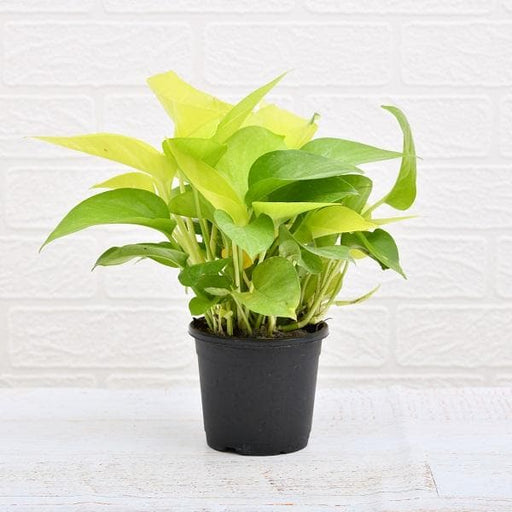 Save 29%
Save 29%
Air Purifier Money Plant with Pot The Air Purifier Money Plant, also known as Pothos or Epipremnum aureum, is a stunning indoor plant that...
View full details
 Save up to 15%
Save up to 15%
Peace Lily, Spathiphyllum - Plant The Peace Lily, scientifically known as Spathiphyllum, is a stunning houseplant celebrated for its elegant white...
View full details
 Save 25%
Save 25%
Jasminum sambac, Mogra, Arabian Jasmine - Plant Jasminum sambac, commonly known as Mogra or Arabian Jasmine, is a fragrant flowering plant...
View full details
 Save 18%
Save 18%
Combo Constituents Includes the Parijat Tree (Night-Flowering Jasmine), a culturally significant plant with fragrant flowers. Description The Pari...
View full details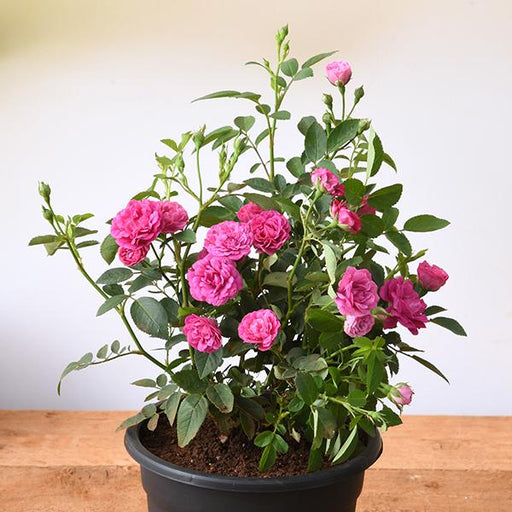
 Save 25%
Save 25%
Miniature Rose, Button Rose (Any Color) - Plant The Miniature Rose, also known as the Button Rose, is a charming and compact flowering plant that ...
View full details Save 25%
Save 25%
Damascus Rose, Scented Rose (Any Color) - Plant The Damascus Rose, also known as Rosa damascena, is a timeless symbol of beauty and romanc...
View full details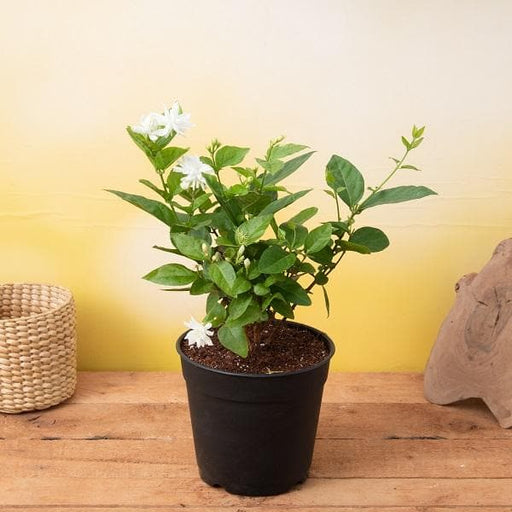
 Save 17%
Save 17%
Beautiful Fragrant Mogra, Arabian Jasmine Plant with Pot The Beautiful Fragrant Mogra, also known as Arabian Jasmine (Jasminum sambac), is...
View full details Save 15%
Save 15%
Pack of Vermicompost and Neem Cake for House Plants Transform your indoor garden with our premium Pack of Vermicompost and Neem Cake, spec...
View full details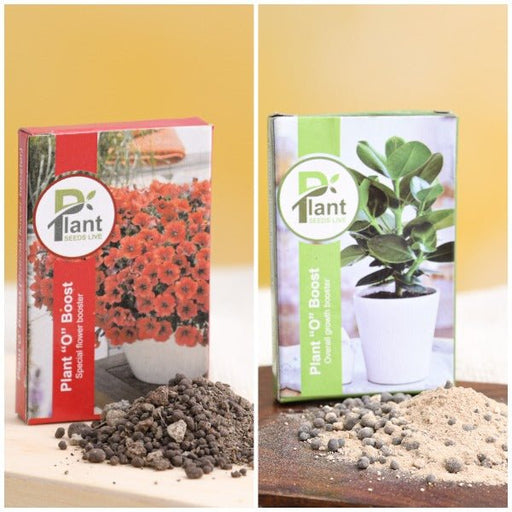
Pack of Plant Growth and Flower Boosters Unlock the full potential of your garden with our Pack of Plant Growth and Flower Boosters! This ...
View full details Save 38%
Save 38%
Combo of Jeevamrut and Neem Raksha for Easy Growth and Protection of Houseplants Transform your indoor garden with our exclusive combo of ...
View full details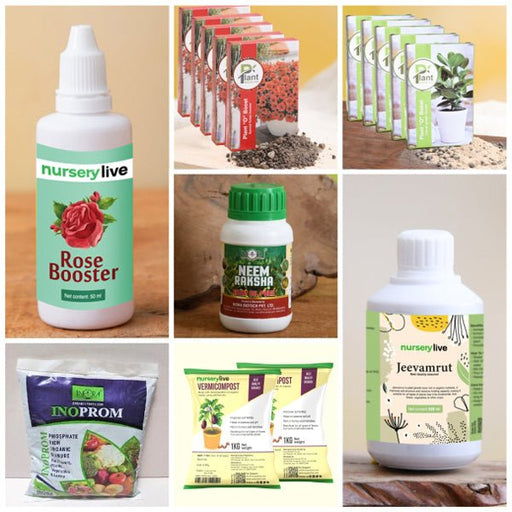 Save 22%
Save 22%
Plant Nutrients Kit (Pack of 16) for a Healthy Garden Transform your garden into a lush paradise with our Plant Nutrients Kit, featuring 1...
View full details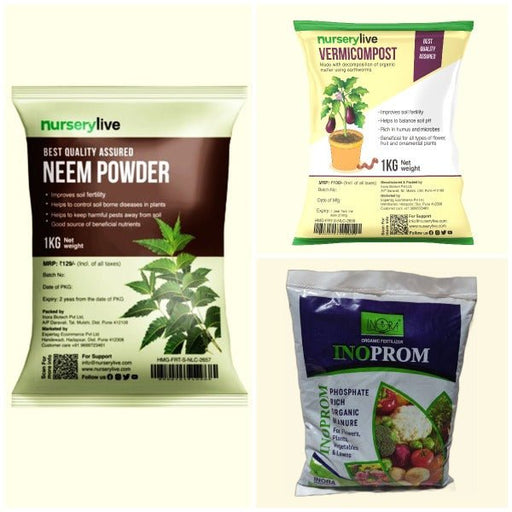 Save 16%
Save 16%
Combo of Top Plant Fertilizers Elevate your gardening game with our exclusive Combo of Top Plant Fertilizers, featuring two bags of premiu...
View full details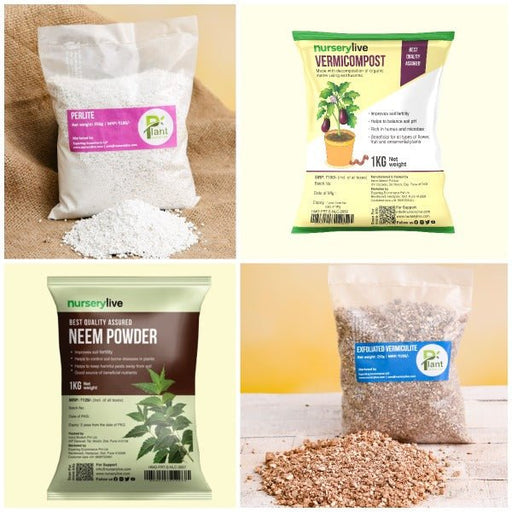 Save 24%
Save 24%
Pack of 4 Additives to Make Soil Healthy and Nutrient Rich Transform your garden into a thriving ecosystem with our Pack of 4 Additives de...
View full details Save 30%
Save 30%
Transform your gardening experience with our premium Combo of Perlite and Vermiculite. This unique blend is designed to enhance soil aeration and ...
View full details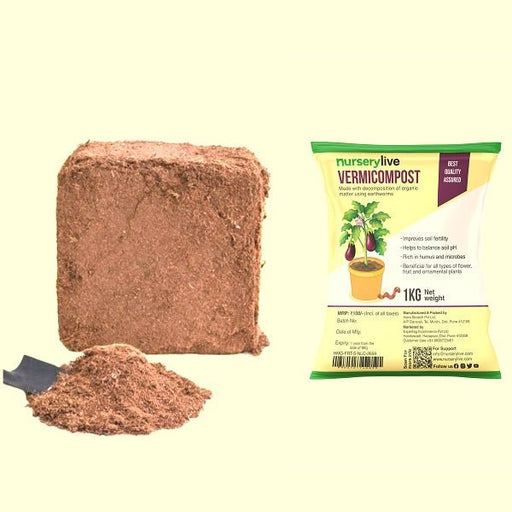 Save 27%
Save 27%
Combo of 2 Vermicompost and Cocopeat - Enrich Your Soil Naturally! Transform your garden into a thriving ecosystem with our Combo of 2 Ver...
View full details
 Save 35%
Save 35%
Best 6 Plants for Perfect Indoor Garden Transform your living space into a lush oasis with our curated collection of the Best 6 Plants for a...
View full details
 Save up to 50%
Save up to 50%
Mini Succulent Garden Pack Transform your space with our Mini Succulent Garden Pack, featuring a delightful collection of 4 any variety beautiful s...
View full details
 Save 30%
Save 30%
5 Best Fragrant Plants Transform your garden or indoor space into a fragrant paradise with our curated selection of the 5 Best Fragrant Plants. Th...
View full details
 Save 24%
Save 24%
Set of 2 Bonsai Looking Grafted Adeniums Transform your indoor or outdoor space with our exquisite Set of 2 Bonsai Looking Grafted Adenium...
View full details Save 45%
Save 45%
Top 4 Die Hard Succulents Pack Transform your indoor or outdoor space with our Top 4 Die Hard Succulents Pack, featuring a curated selecti...
View full details
 Save 30%
Save 30%
5 Best Indoor Plants Pack Transform your living space into a lush oasis with our '5 Best Indoor Plants Pack.' This carefully curated collection fe...
View full details
 Save 25%
Save 25%
Set of 4 Evergreen Air Purifier Plant Pack Transform your indoor space into a lush, green oasis with our Set of 4 Evergreen Air Purifier Pla...
View full details| SrNo | Item Name |
|---|---|
| 1 | Ptelea trifoliata - Plant |
Ptelea trifoliata, commonly known as the common hoptree or wafer ash, is a deciduous shrub native to North America. This unique plant features trifoliate leaves that turn a stunning yellow in the fall, adding vibrant color to any landscape. Its small, fragrant flowers bloom in late spring, attracting pollinators and enhancing biodiversity. With its ability to thrive in various soil types, Ptelea trifoliata is an excellent choice for gardeners looking to create a sustainable and eco-friendly environment.
Ptelea trifoliata is not just visually appealing; it plays a crucial role in its ecosystem. The plant is a host for the larvae of several butterfly species, making it a vital component of local wildlife habitats. Additionally, its aromatic foliage is known to repel certain pests, providing a natural form of pest control in gardens.
This hardy shrub is drought-tolerant once established, making it an ideal choice for low-maintenance gardens. Its unique seed pods, which resemble small, flat disks, add an interesting texture to the landscape. Ptelea trifoliata also has a historical significance, as Native American tribes used its bark for medicinal purposes.
Ptelea trifoliata contributes to soil health and supports local wildlife, making it an excellent choice for sustainable gardening. Its ability to thrive in various conditions helps prevent soil erosion and promotes biodiversity, making it a valuable addition to any garden.
If you’re looking for a tree that’s not just a pretty face, Ptelea trifoliata, or the common hoptree, is your go-to. This little green wonder offers a plethora of benefits, from attracting pollinators to providing a natural habitat for wildlife. Its aromatic leaves can even be used in herbal remedies. Who knew a tree could be so multi-talented?
Caring for Ptelea trifoliata is like nurturing a quirky friend. It thrives in well-drained soil and loves a good sunbath, but don’t drown it in water! Pruning is essential, but don’t go overboard; it’s not a haircut, it’s a trim. With a little love and attention, this tree will reward you with lush foliage and a delightful presence in your garden.
If you’re impatient for instant gratification, Ptelea trifoliata might not be your best buddy. This tree has a moderate growth rate, taking its sweet time to reach maturity. But hey, good things come to those who wait! In a few years, you’ll have a stunning specimen that’s the envy of the neighborhood.
Ptelea trifoliata is a tree that knows how to pick its friends. It thrives in a variety of habitats, from dry, rocky soils to moist woodlands. This adaptability makes it a superstar in the plant world. Whether you’re in the heart of the city or the depths of the forest, this tree can find a way to fit in.
Want to spread the love? Propagating Ptelea trifoliata is easier than you think! You can start with seeds or cuttings, and before you know it, you’ll have a mini forest of hoptrees. Just remember, patience is key; good things take time, and so do trees!
The uses of Ptelea trifoliata are as diverse as its foliage. From landscaping to herbal medicine, this tree wears many hats. Its leaves can be brewed into a tea, while its wood is perfect for crafting. Who knew a tree could be so versatile? It’s like the Swiss Army knife of the plant kingdom!
Every tree has its foes, and Ptelea trifoliata is no exception. While it’s generally pest-resistant, it can occasionally attract aphids and scale insects. But fear not! A little soapy water or neem oil can send those pesky critters packing. After all, a tree’s gotta protect its turf!
Ptelea trifoliata is not picky about its soil, but it does have preferences. It thrives in well-drained, loamy soil, but it can tolerate a range of conditions. Just avoid heavy clay or soggy spots; this tree prefers to keep its roots dry and happy.
Sunlight is the lifeblood of Ptelea trifoliata. This tree loves basking in full sun but can tolerate partial shade. Just remember, too much shade can make it sulky and less vibrant. So, give it a sunny spot, and watch it flourish like the star it is!
Looking to add some pizzazz to your landscape? Ptelea trifoliata is the perfect choice! With its unique trifoliate leaves and attractive form, it makes a stunning focal point. Plus, it’s a great conversation starter—everyone will want to know about your exotic hoptree!
Ptelea trifoliata isn’t just a pretty tree; it’s also a herbal powerhouse! Traditionally, its leaves and bark have been used for various medicinal purposes, from treating fevers to digestive issues. Just remember, while it’s great for herbal enthusiasts, always consult a professional before diving into DIY remedies!
Ptelea trifoliata, also known as the common hoptree, is a deciduous shrub or small tree native to North America. With its trifoliate leaves and aromatic flowers, it’s like nature’s own perfume factory. Plus, it’s a favorite among pollinators, making it a must-have for eco-friendly gardens. Who knew being green could smell so good
Caring for Ptelea trifoliata is as easy as pie! Plant it in well-drained soil and give it a sunny spot. Water it moderately, and it’ll thrive like a diva. Prune it occasionally to maintain its shape, and watch it flourish. Just remember, it’s not a fan of soggy feet—no one likes wet socks!
Ptelea trifoliata blooms in late spring to early summer, showcasing its charming clusters of tiny, fragrant flowers. It’s like a floral party that attracts bees and butterflies, turning your garden into a buzzing hotspot. So, mark your calendar and prepare for nature’s own celebration—no RSVP required!
Talk about multitasking!
Yes, Ptelea trifoliata is considered deer-resistant! While these critters might nibble on your prized roses, they tend to leave this aromatic shrub alone. It’s like having a secret garden bouncer that keeps the munching marauders at bay. So, plant it with confidence and let the deer munch elsewhere!
Ptelea trifoliata can grow anywhere from 10 to 20 feet tall, depending on its environment and care. It’s like the Goldilocks of plants—not too tall, not too short, but just right for adding vertical interest to your garden. Perfect for those who want a little height without a towering giant!
Absolutely! Ptelea trifoliata is quite drought-tolerant once established. It’s like that friend who can survive on snacks alone during a road trip. Just give it a good drink during its early days, and it’ll thrive even when the rain decides to take a vacation. Talk about a low-maintenance superstar!
Plant Ptelea trifoliata in a sunny to partially shaded spot with well-drained soil. It loves to stretch its roots and soak up the sun, but it won’t mind a little shade now and then. Just avoid soggy areas—this plant prefers to keep its feet dry, just like you on a rainy day!
No, Ptelea trifoliata is not considered invasive. It plays nice with other plants and won’t take over your garden like an uninvited guest. Instead, it enhances the landscape, providing beauty and attracting wildlife. So, feel free to invite this charming shrub to your garden party without worrying about it crashing!
Propagating Ptelea trifoliata is a breeze! You can do it through seeds or cuttings. For seeds, collect them in the fall and stratify them for a few months. For cuttings, take a healthy stem in spring, dip it in rooting hormone, and plant it. Soon, you’ll have more hoptrees to love!
Ptelea trifoliata is generally pest-resistant, but watch out for aphids and scale insects. They might try to crash the party, but a good spray of water or insecticidal soap will send them packing. With a little vigilance, your hoptree will remain the belle of the garden ball, pest-free and fabulous!
Yes, Ptelea trifoliata can grow in containers, but it prefers to stretch its roots in the ground. If you choose the container route, ensure it’s large enough and has good drainage. Just remember to water it regularly, and it’ll be a delightful addition to your patio or balcony garden!